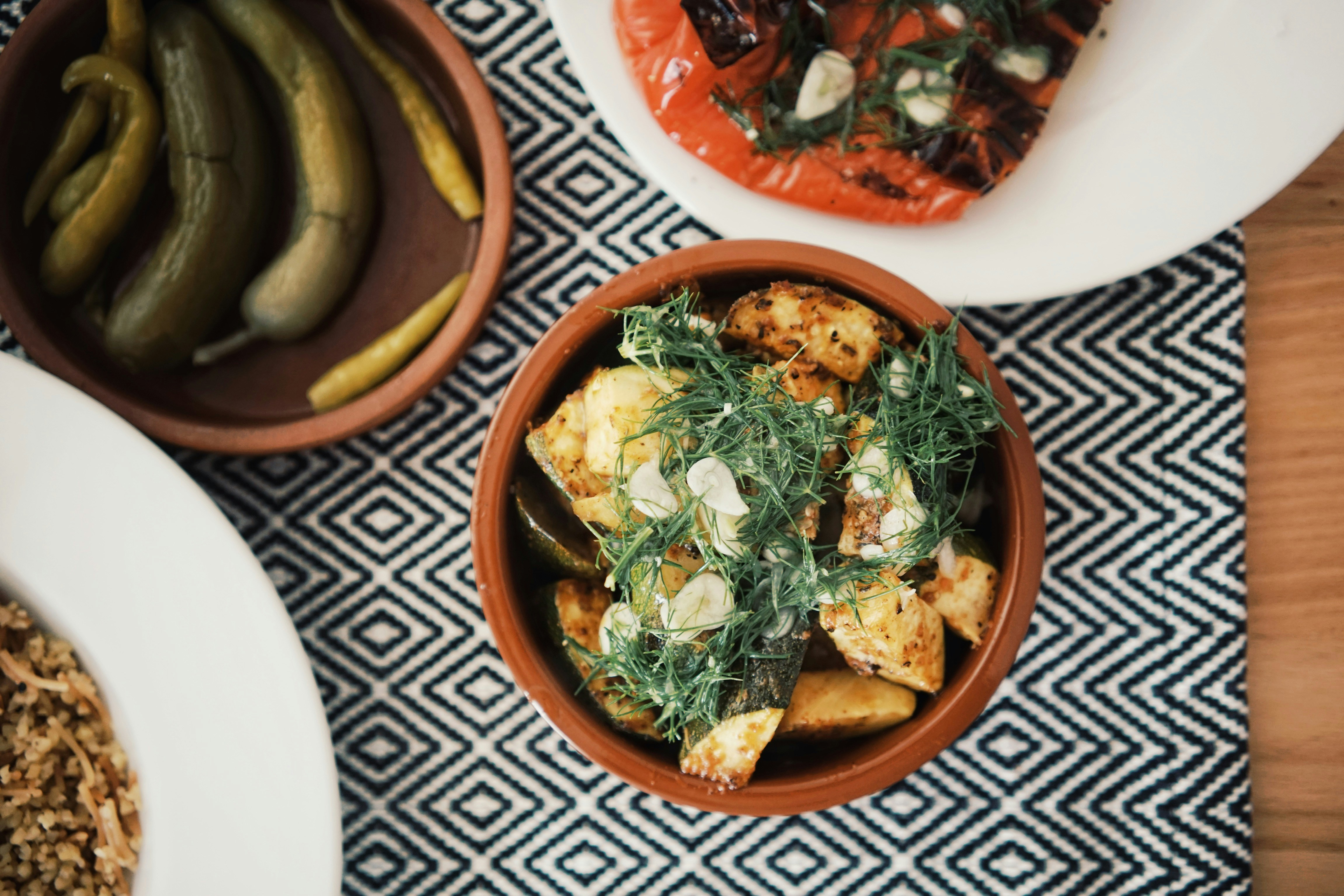A Delectable Dive into Moroccan Cuisine: A Showcase of Spices and Flavors
Moroccan cuisine is a captivating fusion of tastes and cultures, reflecting the country's rich history of invasions and international influence. It offers a unique culinary experience that is just as diverse as the country's landscape, from the spice-packed markets of Marrakech to the fresh seafood of the Atlantic coast.

A Feast for the Senses: The Pillars of Moroccan Cuisine
Moroccan dishes are renowned for their intricate flavor profiles, combining sweet and savory spices in a way that is distinctively Moroccan. The staples of the cuisine include couscous, tagine, and harira, each offering a different taste of the country. Couscous, a staple grain, is often paired with a variety of vegetables and meats in a flavorful broth. Tagine, named after the earthenware pot it’s cooked in, is a slow-cooked stew that can feature anything from lamb to fish, combined with a range of spices and often fruits like apricots or prunes. Harira, a hearty soup, is traditionally enjoyed to break the fast during Ramadan, but its rich flavors of lentils, chickpeas, and tomatoes make it a favorite year-round.
Morocco’s Spice Symphony: The Art of Flavor
The cornerstone of Moroccan cuisine is its masterful use of spices. The combination of sweet and savory, along with a variety of textures, creates a unique sensory experience. Ras el hanout, a mix of over a dozen spices, is a Moroccan kitchen staple, featuring ingredients like cumin, coriander, cinnamon, and turmeric. Mint, saffron, and olives are also commonly used, each lending their distinct flavors to dishes.
Bread: The Heart of Moroccan Meals
Bread is an essential part of every Moroccan meal. It is used as a utensil, a filler, and even a base for some dishes. The most common type is khobz, a round, crusty bread, but other varieties like msemen, a flaky, layered flatbread, and baghrir, a spongy pancake-like bread, are also popular.
A Sweet Finish: Moroccan Desserts and Beverages
No Moroccan meal is complete without a sweet treat and a glass of traditional Moroccan mint tea. Pastilla, a sweet and savory pie traditionally filled with pigeon and dusted with powdered sugar and cinnamon, is a favorite. For those with a sweet tooth, desserts like chebakia, deep-fried sesame cookies soaked in honey, and sellou, a sweet, nutty paste, are must-tries.
Moroccan Culinary Tips and Trivia
-
When making a tagine, resist the urge to stir. The unique design of the tagine pot allows the ingredients to self-baste, creating a more intense flavor.
-
Moroccan meals are traditionally eaten with the right hand, using bread as a scoop.
-
The word “couscous” not only refers to the grain but also the dish as a whole, which includes the grain, broth, and toppings.
-
Moroccan mint tea is also known as “Moroccan whiskey” because of its importance in social gatherings.
In conclusion, Moroccan cuisine offers an enchanting gastronomic journey. The intricate blend of spices, the importance of bread, and the sweet finishes of their desserts create a unique culinary experience that is sure to captivate food enthusiasts around the globe. It invites you to immerse yourself in a realm of flavors as diverse and vibrant as Morocco itself. So, are you ready to take your taste buds on this delectable adventure?






